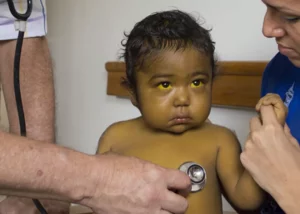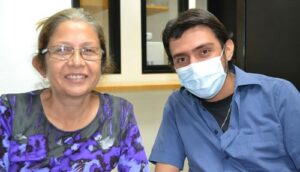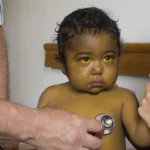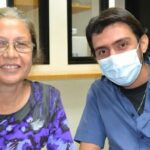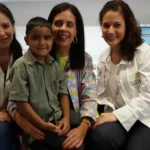Liver cancer is the fifth leading cause of cancer deaths in the U.S., ranking it as the fastest growing cancer death rate in the country.
The liver is one of the vital organs of the body, which is why early detection of liver cancer will be paramount when it comes to initiating treatment. For this reason, it is of utmost importance to know the symptoms and types of cancer that can occur in this organ.
There are different symptoms that could indicate liver cancer, although it should be noted that by the time these signs appear the disease has advanced considerably. In case of presenting any type of similar symptomatology, it is recommended to see a medical specialist.
- Loss of appetite and weight.
- Weakness and fatigue.
- Abdominal pain (in the upper parts).
- Itching.
- Nausea and vomiting.
- swelling of the abdomen
- white or whitish-colored stools.
- enlarged liver and spleen
- Jaundice (the skin and whites of the eyes turn yellow).
Three types of liver cancer are currently known, hepatocellular carcinoma (HCC), cholangiocarcinoma and hepatoblastoma.
HCC
This is the most common type of liver cancer, its onset is through the abnormal growth of the hepatocyte cell, a specific liver cell that is the beginning of the tumor. It tends to occur in patients over 50 years of age, mostly men.
Cholangiocarcinoma
Also called bile duct cancer, it arises from the tissues of the ducts that connect the liver to the gallbladder and the gallbladder to the small intestine (hepatic bile ducts) (Via CancerQuest).
It is a type of cancer whose symptoms are usually variant, which is why it tends to be confused with liver diseases such as cirrhosis or hepatitis. However, regarding the standard age of possible patients, it is in people over 60 years of age.
Hepatoblastoma
As for this type of cancer, it can occur in children and is even frequently detected in infants between 14 and 24 months of age. Most patients are diagnosed before their fifth birthday; however, adults can also present this disease, although it is not very common.
It is known that there are different risk factors, such as contracting hepatitis C, constant alcohol consumption, hepatitis B virus, excessive smoking, obesity and diabetes mellitus are some of them. As for the prevention of this disease, healthy habits are advised, such as healthy food, exercise, avoiding the constant consumption of harmful substances and excessive stress.





